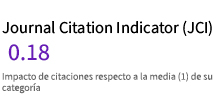The music, propaganda and the No-Do advertising
DOI:
https://doi.org/10.24310/Fotocinema.2019.v0i18.5539Keywords:
Cinematography, Advertising, Propaganda, Image, Music, Audio Branding.Abstract
Already transformed into an artistic discipline of audiovisual communication, music has become an essential tool for advertising and image promotion, sing or advertising concept helping to quickly remember the advertising message which media is interested we keep in mind. For it, cinematography is one of the audiovisual media that benefits the most of the use of music-image binomial as dissemination elements. In this article we will try to explain how the No-Do used one the most used audiovisual techniques currently in the advertising world, the Audio Branding. In this way, we will unreveal those formal resources which, from a musical point of view, they were used for the No-Do promotion on their newspaper mastheads. We will see how the changes in the pictures of such mastheads undergo modifications in pro of the conservation of the soundtrack composed by Manuel Parada de la Puente, being his music the responsible for the durability of the No-Do brand over time.
Downloads
Metrics
Publication Facts
Reviewer profiles N/A
Author statements
Indexed in
-
—
- Academic society
- N/A
- Publisher
- Universidad de Málaga
References
Eguizábal, R. (2011). Historia de la publicidad. Madrid: Fragua.
Guijarro, T. & Muela, C. (2003). La música, la voz, los efectos y el silencio en publicidad. La creatividad en la producción del sonido. Madrid: Dossat 2000.
Martínez, Mª A. & Gómez, A. (2015). La imagen cinematográfica: manual de análisis aplicado. Madrid: Síntesis.
Melendo, A. (2011). Introducción al análisis cinematográfico. Córdoba: UCO.
Miranda, L. (2011). Manuel Parada y la música cinematográfica española durante al franquismo: estudio analítico. Tesis Doctoral, Universidad de Oviedo, España, Oviedo.
Spehr, G. (2009). Audio Branding – all new? En Bronner, K. & Hirt, R., Audio Branding: Brands, Sound and Communication (pp. 27-33). Magdeburgo, Alemania: Nomos.
Ubik media. (2013). Audio Branding. ¿A qué suena tu marca? Recuperado de http://www.ubikmedia.net/es/blogcatala/98-audio-branding-a-que-suena-tu-marca
Downloads
Published
How to Cite
Issue
Section
License
All contents published in Fotocinema Revista científica de cine y fotografía are protected under the Creative Commons Attribution-NonCommercial-ShareAlike 4.0 International (CC BY-NC-SA 4.0) license. All about this license is available in the following link: <http://creativecommons.org/licenses/by-nc-sa/4.0>
Users can copy, use, redistribute, share and exhibit publicly as long as:
- The original source and authorship of the material are cited (Journal, Publisher and URL of the work).
- It is not used for comercial purposes.
- The existence of the license and its especifications are mentioned.
There are two sets of authors’ rights: moral and property rights. Moral rights are perpetual prerogatives, unrenounceable, not-transferable, unalienable, imprescriptible and inembargable. According to authors’ rights legislation, Fotocinema. Revista científica de cine y fotografía recognizes and respects authors moral rights, as well as the ownership of property rights, which will be transferred to University of Malaga in open access. The property rights are referred to the benefits that are gained by the use or the dissemination of works. Fotocinema. Revista científica de cine y fotografía is published in an open access form and it is exclusively licenced by any means for doing or authorising distribution, dissemination, reproduction, , adaptation, translation or arrangement of works.
Authors are responsable for obtaining the necessary permission to use copyrighted images.














13.png)



